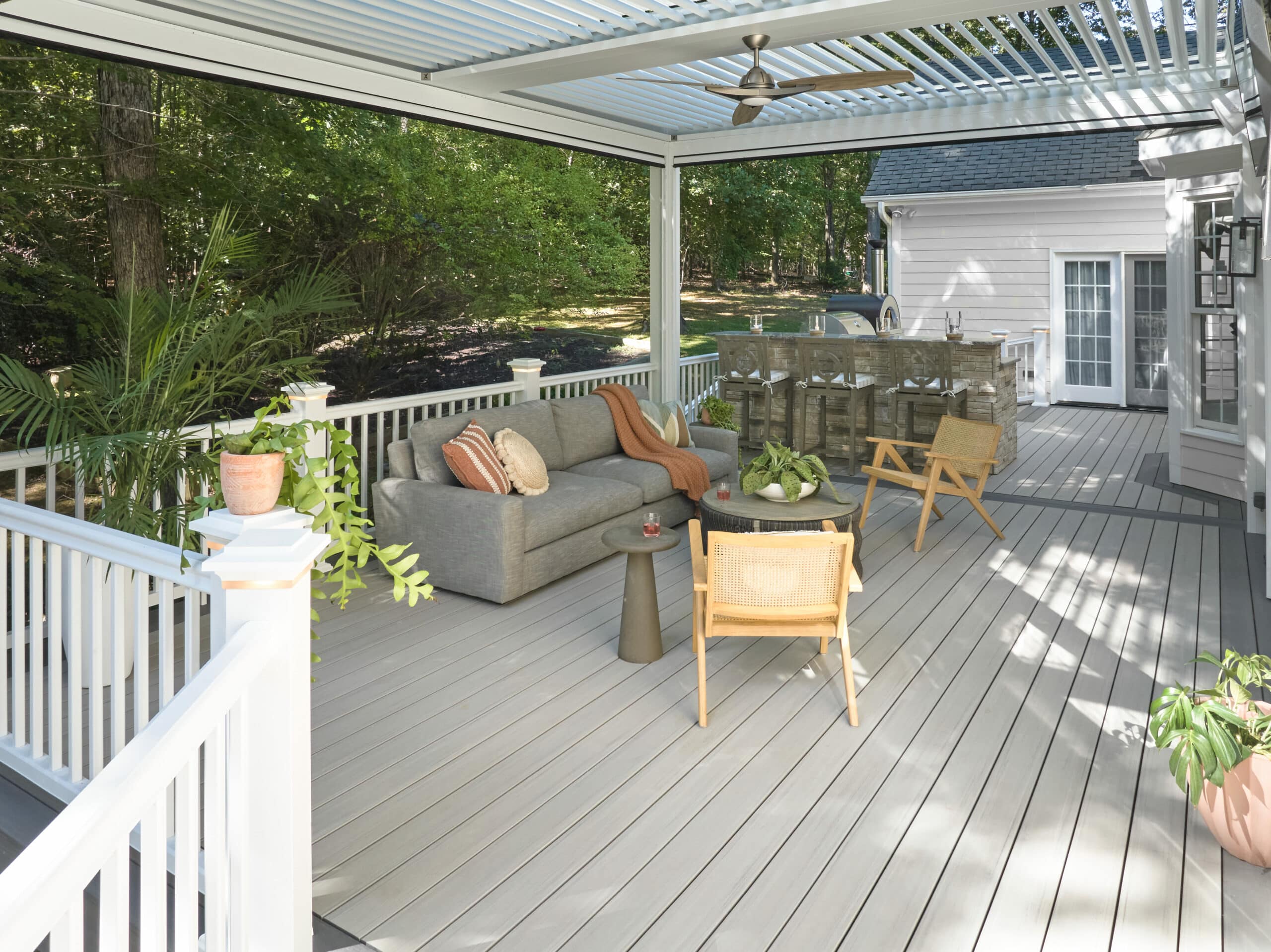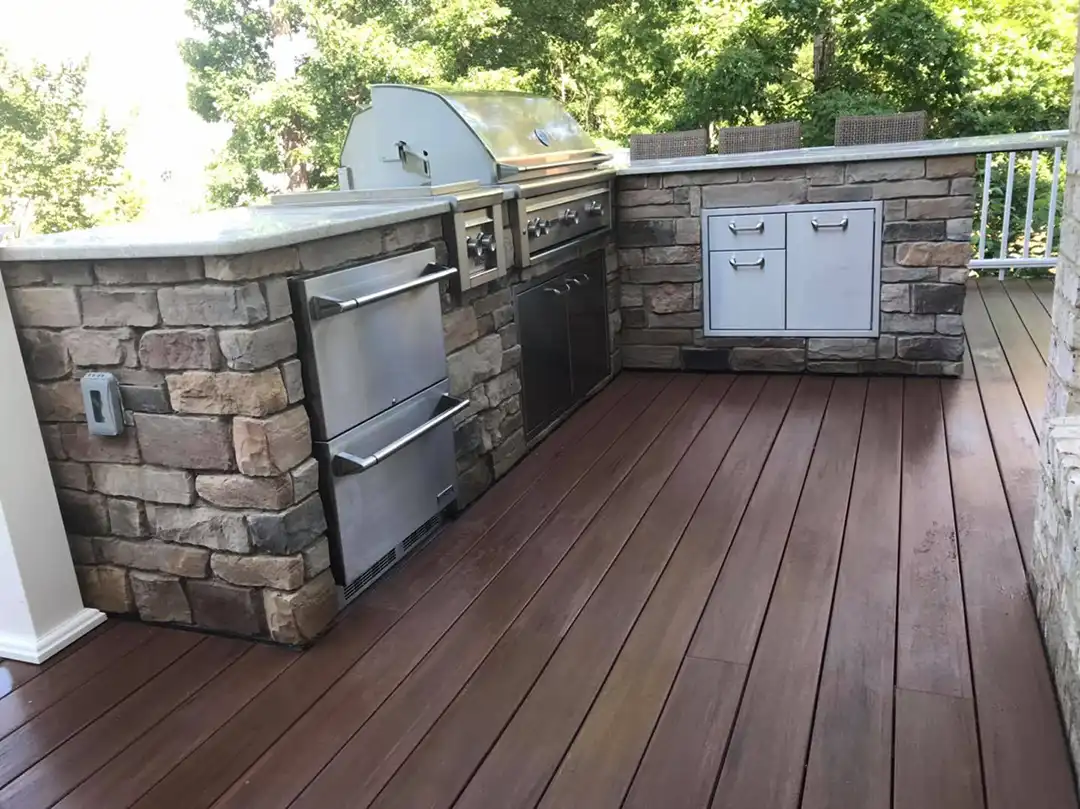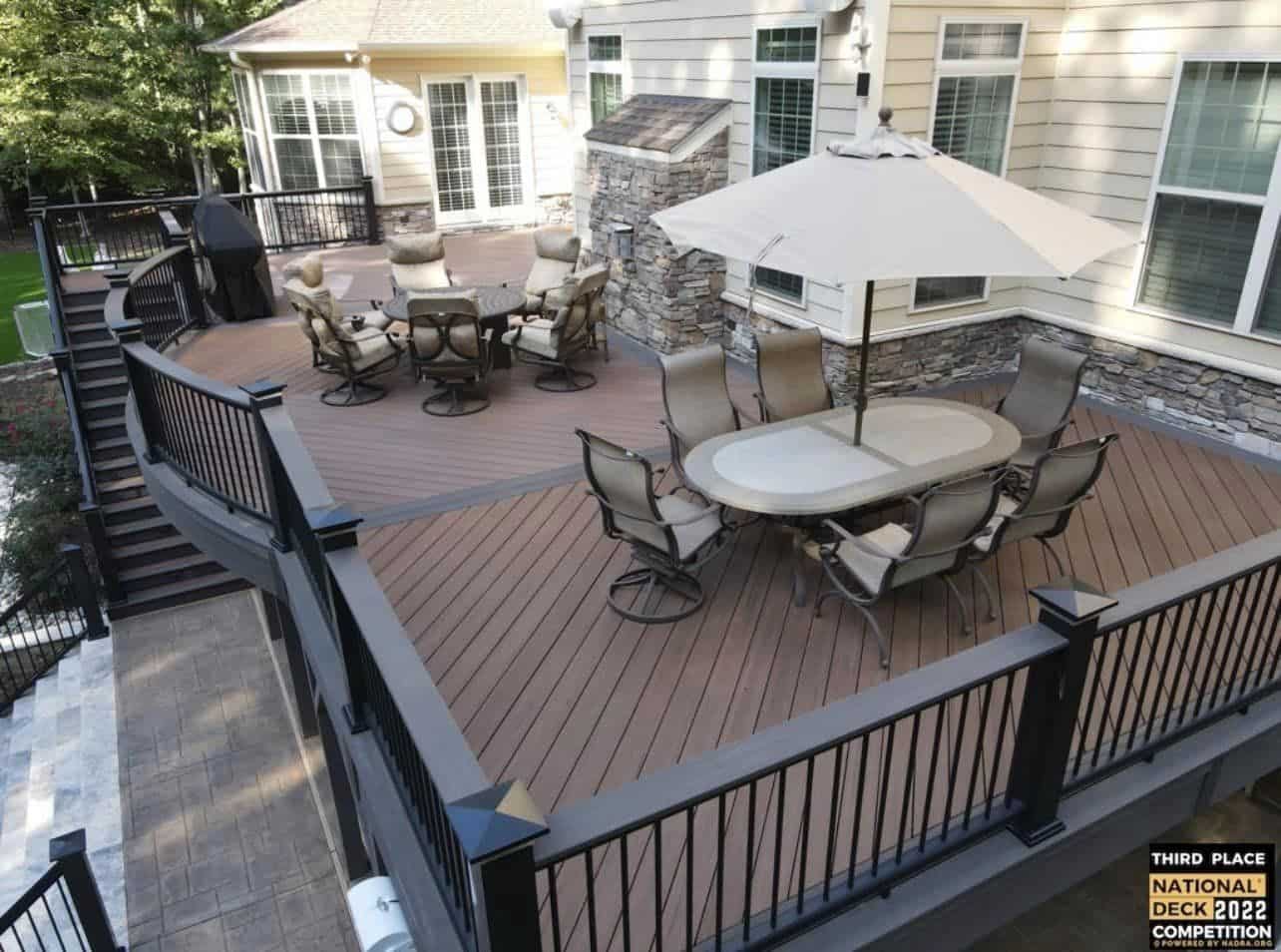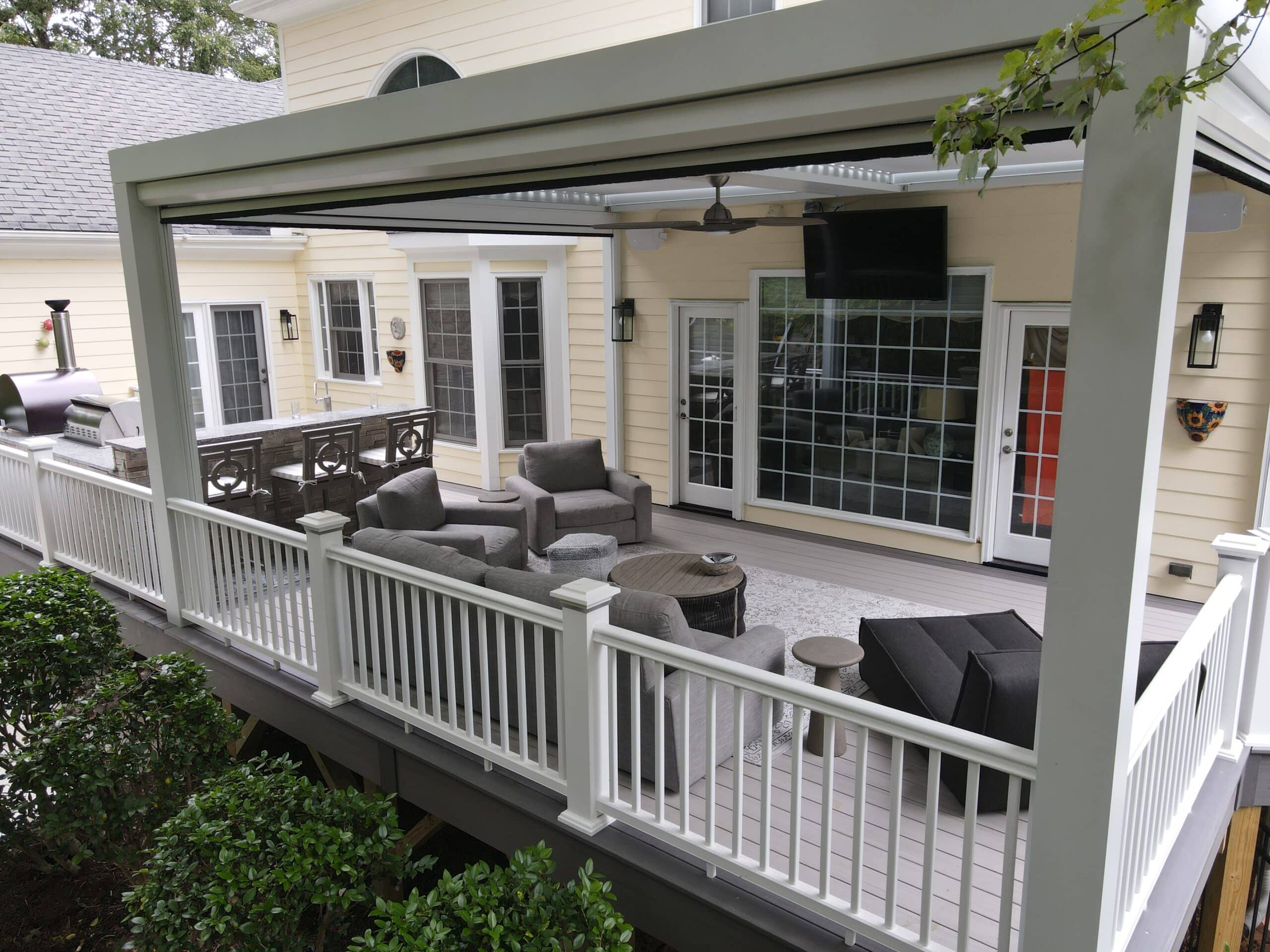Composite vs Wood Decking Cost: Which is Better for You?
In recent years, composite decking, like TimberTech/AZEK, has gained significant popularity among homeowners and builders alike. This surge in interest is driven by composite decking’s appealing blend of durability, low maintenance, and aesthetic versatility. Composite materials have become a go-to choice as people seek long-lasting, environmentally friendly outdoor spaces.
However, cost remains a crucial factor when choosing the right decking material. Deciding between composite and traditional wood decking involves considering the initial expenses and long-term costs associated with maintenance and durability, and our team at Majestic Outdoors will guide you through your options.
Let’s explore the dynamics of composite vs wood decking costs to help you determine which option is best suited for your outdoor project.

Upfront Costs: Wood vs. Composite Decking
When considering the upfront costs of decking materials, it’s essential to understand how wood and composite options compare relative to each other.
- Traditional wood decking typically has a lower initial cost compared to composite decking. This lower cost makes wood an attractive option for those building a deck on a tighter budget.
- Composite decking, while additionally more expensive upfront, offers a different value proposition. The higher upfront cost of composite materials is often justified by their long-lasting durability and minimal maintenance requirements.
So, while wood decking tends to be more budget-friendly at the point of purchase, composite decking represents a higher initial investment that can pay off over time. As you weigh your options, consider the initial outlay and the potential long-term savings and benefits.
Maintenance Costs of Composite vs Wood Decks

When it comes to maintaining your deck, the differences between wood and composite materials become even more pronounced.
- Wood decks require significant upkeep to keep them looking their best and extend their lifespan. This typically involves annual cleaning to remove dirt, mold, and mildew. A wood deck or pressure-treated wood deck must also be stained or sealed every few years to protect it from the elements, which can be time-consuming and costly. Regular maintenance, cleaning, staining, painting, sealing, and replacing damaged boards can become recurring expenses, making natural wood decking more expensive.
- Composite decking requires minimal maintenance. Occasional cleaning with soap and water is usually sufficient to keep a composite deck looking new. Unlike wood, composite materials are not susceptible to weathering, rot, or insect damage. This means homeowners with composite boards won't have to deal with the hassle and expense of replacing damaged or deteriorated wood boards.
Composite Decking vs Wood Decking: How Durability and Lifespan Impacts Cost

The durability and lifespan of decking materials play a part in the cost-effectiveness of your deck.
- Wood decks generally have a lifespan of about 10 to 15 years. Over this period, real wood is susceptible to various forms of damage, such as rotting, splintering, and warping, particularly when exposed to the elements like rain, sun, and fluctuating temperatures. These issues often lead to frequent repairs and premature replacement, either of deck boards or the entire deck, adding to the overall cost of your deck.
- Composite decking stands out for its exceptional durability. Composite materials are engineered to resist the common problems that plague wood decks. They won't rot, splinter, or warp, even when subjected to harsh weather conditions. This resilience significantly extends the lifespan of a composite deck, with many products boasting warranties ranging from 25 to 50 years and sometimes even longer.
The extended lifespan of composite decking translates to substantial cost savings over time. While the initial investment in composite materials is higher, the long-term savings on repairs, replacements, and maintenance make it a more economical choice. Homeowners can enjoy a beautiful, functional deck for decades without the recurring expenses of wood decking.
Other Factors to Consider When Deciding Between Composite vs Wood Decking

Appearance & Style Options
- Wood decks offers a classic, natural look that many homeowners find appealing. Its organic beauty and warm tones can complement a variety of architectural styles. However, wood decking is somewhat limited in style options.
- Composite decking materials provide many style options. The composite deck boards come in various colors, allowing homeowners to choose from more than just traditional brown hues. Additionally, composite decking often features imitation wood grain finishes that mimic the appearance of natural wood, offering the best of both worlds: the look of wood without maintenance.
Environmental Impact
- Wood, a renewable resource, often requires chemical treatments to resist rot, insects, and weathering. These treatments can have environmental implications and involve potentially harmful chemicals. However, sustainably sourced wood from well-managed forests can mitigate some of these concerns, promoting responsible forestry practices.
- Composite decking manufacturers use recycled materials, like plastic and wood fibers, making it a more eco-friendly option. Its recycled content helps reduce waste and minimize the need for new raw materials. Additionally, its long lifespan means fewer resources are consumed over time.
Composite vs Wood Deck: Which Will You Choose? Let’s Talk
Investing in the right decking material is about more than just enhancing your outdoor space; it’s about ensuring long-term value and enjoyment. At Majestic Outdoors, we can guide you through decision-making, helping you understand how choosing composite or wood decking will impact your overall investment. We’ll discuss our preferred composite materials from TimberTech/AZEK and why we love the product.
Contact us today to request a consultation.



